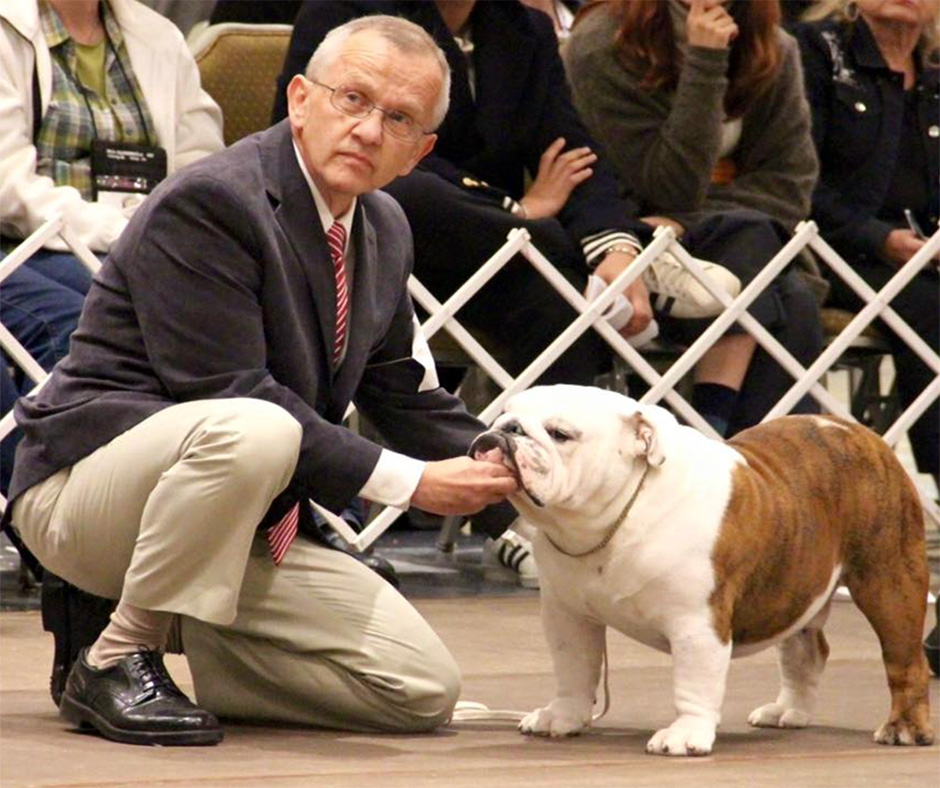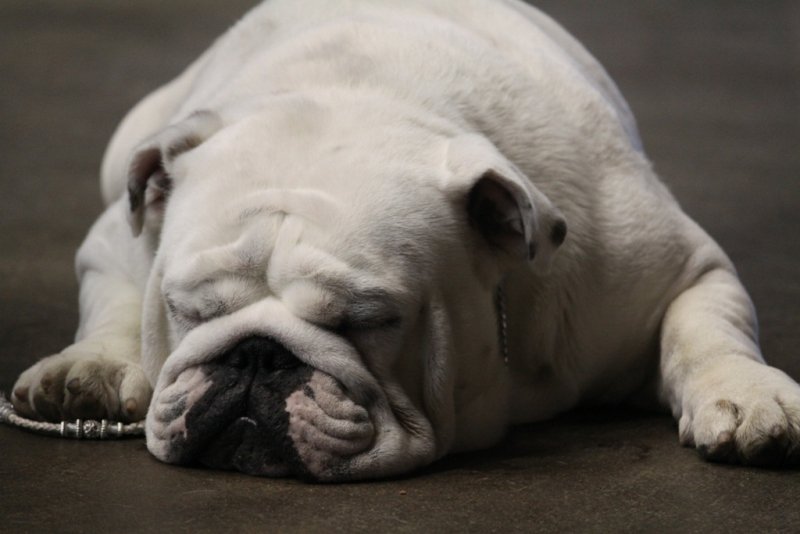648 — Cody Sickle: Knowledge is the Key to Success
Famed Bulldog breeder-owner-handler Cody Sickle joins host Laura Reeves for the first of a two-part series on owner-handlers, dog shows, Bulldogs, breeding and camaraderie.
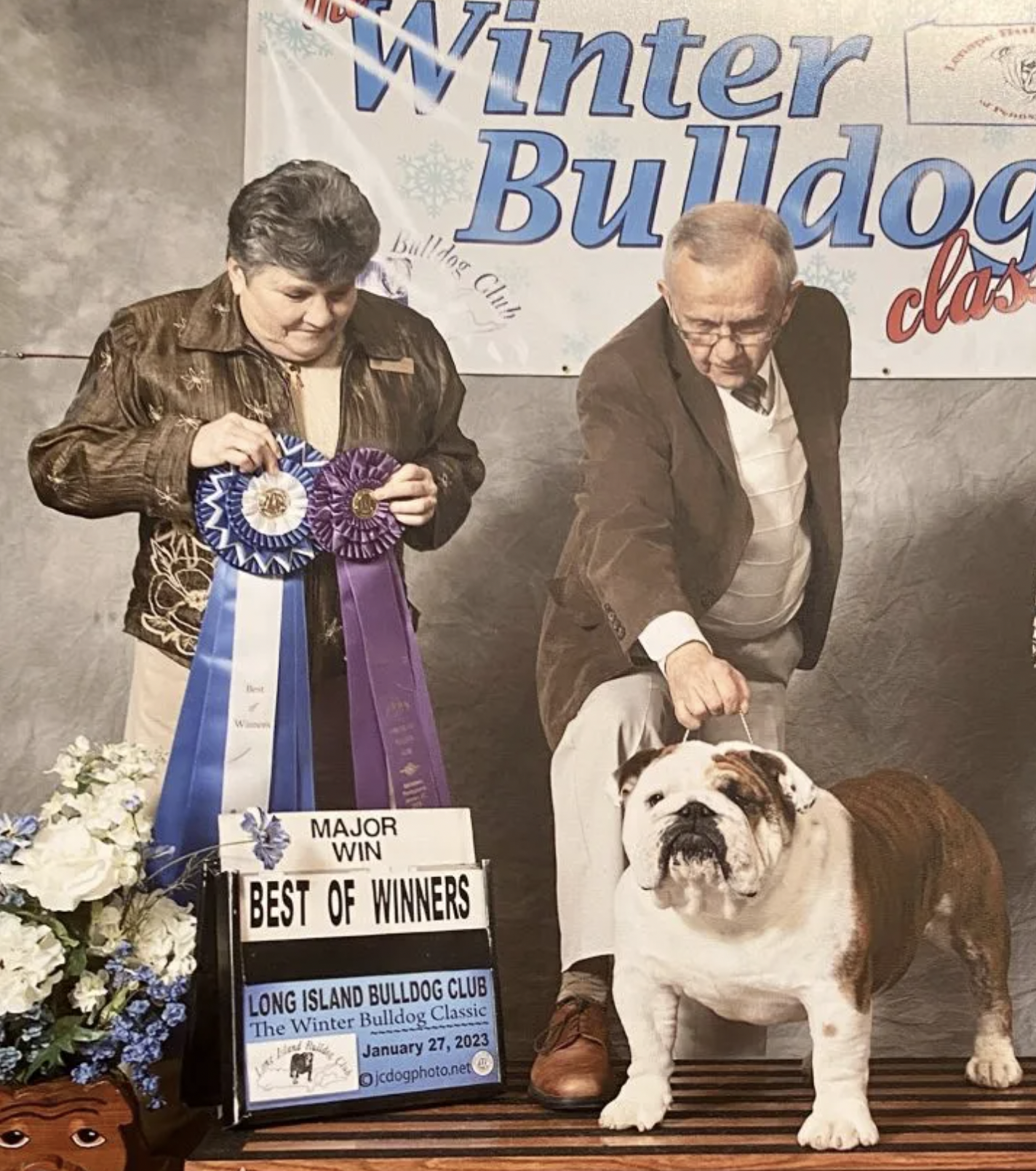
CHEROKEE LEGEND NOR’EASTER DEREK
Long Island Bulldog Club Specialty. Winners Dog & Best of Winners. Judge: Phoebe Booth
Sickle’s renowned Cherokee Bulldogs have quite a record. According to his records, he has bred or owned 256 Champions, more than any other Bulldog breeder ever in the USA. His dogs have won 99 All Breed Bests In Show and 591 Bests In Specialty Show, five National Specialty Bests Of Breed and 15 Westminster Kennel Club Bests of Breed. All of which rank as #1 all-time results in the breed.
Sickle says he knew he wanted a Bulldog from the time he was 5 years old. His parents said he had to pay for it himself. So he skipped going to the movies, did extra jobs, saved his allowance and finally was able to purchase his first dog for $60.
“I find the Bulldog people are terrific,” Sickle said. “They are just as you say. We go in the ring, we’re competing with each other and we’re obviously all trying to win. When it’s over, it’s over. We are all friends when it’s over. We are a good representative of what sportsmanship should be almost all the time. There are exceptions, but not very many.
“I’ve listened to people say, well, you know, the Bulldog people are good, but this breed is not. I’m not intimately familiar with the interactions of people in other breeds. But I am very into the dog people in general and the dog people in general are helpful.
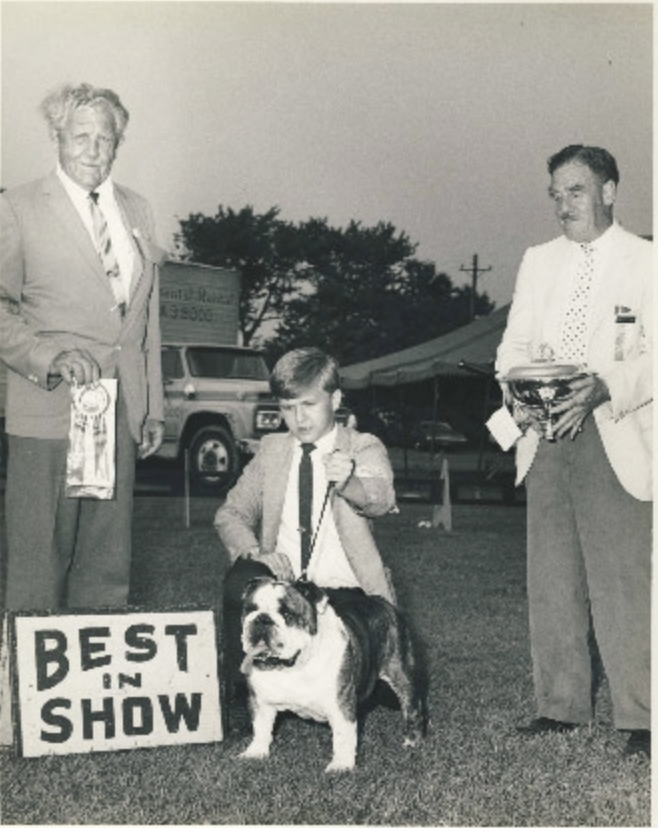
Cody Sickle with CH. CHEROKEE MORGAN. Best In Show…Penn Ridge Kennel Club. Judge: James Warwick. August 1969
“I’ve never once in my life went up to any dog person and said tell me about this or tell me about that and had them say no, not ever. And when I was 13 years old, I used to hang around the handlers. Richard Bauer when Jimmy Mitchell was his assistant. Wendell Sammett when Paul Edwards was his assistant. Peter Green, the Forsyths, they were all terrific. They were all perfectly willing to share their knowledge. They’re perfectly willing to answer all my questions, and my questions were incessant.
“The Bulldog people were the same way. One of the benefits about the Bulldog people being good people is that, in order to learn I think it’s necessary to speak to lots of people. Because people have different views. Some people just can’t communicate what you’re trying to learn and sometimes whatever they’re saying, even though it’s just right on, it doesn’t register properly. So if you ask everybody and work at weeding out what sounds like nonsense and keeping what sounds like it’s valuable, you’re going to learn a lot more.”
304 – Bulldogs, professionals and imprinting type with Jay Serion
Bulldogs, professionals and imprinting type with Jay Serion

Jay Serion and Brix… Photo by Ryan Estrada Photography
Specialist Jay Serion talks about bulldogs, having pride as a handler, starting in the trenches and establishing a vision of type from understanding the standard.
“At my first dog show, my dog was third out of three,” Serion said. “I came out of the ring thinking, ‘we need to remedy this.’ Cuz I was competitive. I learned a lot.”
Serion’s recipe for success:
- Do the work outside the ring.
- Fix it in the whelping box not the tack box
- Start in the trenches. Success is not an overnight thing
“My mentors were honest,” Serion said. “They told me to read the standard. Learn the standard. Study pedigrees. Ask people. Ten people will give you 10 answers. There will be a common denominator, that’s your truth.”
Professional handlers all have a bar set of the quality they want to present, Serion noted.
“Especially if you are a specialist, it is part of your responsibility to campaign a good one,” he added. “I don’t want to waste money and time. And it takes a lot of both. I’d rather wait for a great one than push one that people that know *know* isn’t.”
A Bulldog Club of America approved mentor, Serion shares his knowledge about the breed’s outline and appearance.
“They’re supposed to be athletic. In my breed, the standard was written to save the breed from an influx of “Spanish dogs” that were huge,” Serion said. “The perfect bulldog must be of medium size. This was not arbitrary.”
Layback isn’t just for shoulders
The Bulldog standard is unique in that the term “layback” refers to the head structure. Serion describes this very specific construction as being from the tip of the lower jaw, tip of the nose, through the forehead to the occiput, should be a 45 degree angle in a straight line.
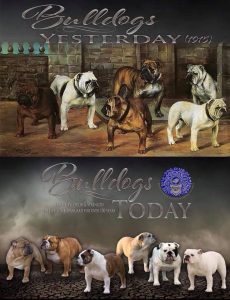
Illustration of the Bulldog then and now courtesy of the Bulldog Club of America.
“The dogs were used in bull baiting. The jaw needed to be strong enough to grab on to a bull and hang on, while the nose was pushed back so they could hold on and still breathe,” Serion siad.
Brachycephalic
“Our dogs are just as healthy as other breeds,” Serion said. “We’ve created an Ambassador of Health program in the national club encouraging health clearances.”
The program was created to provide proof of healthy dogs, testing everything from tracheas, to cardio, patella, spine, hips, elbows and more, Serion noted.
Temperament
Bulldogs originally were an aggressive animal to do the job, Serion observed. The original breeders wanted to keep the type features but eliminate aggression. “I’d never breed an aggressive animal no matter how pretty it is.”
For more on the genetics of temperament: https://puredogtalk.com/dr-karen-overall-temperament-vs-geneticspure-dog-talk/

